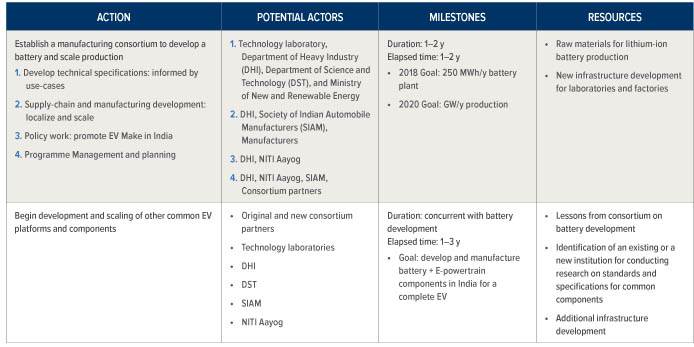'Sunny opportunity for India to revolutionise mobility'
Chetan Maini, the pioneering electric vehicle maker and vice-chairman of Sun Mobility, on the huge potential of electric mobility in India.
Chetan Maini, the pioneering electric vehicle manufacturer and vice-chairman of Sun Mobility, writes an exclusive column on the huge potential of electric mobility in India.
Like energy, our ideas about sustainability and mobility need constant renewal. Right now, we are going through a galvanising period of renewal in the energy sector. Producers and consumers of clean energy are coming together to solve the pressing problems of pollution, quality of life, and the rising costs of traditional energy.
The fossil-based energy sources that have been fueling our lifestyles are rapidly depleting, affecting our energy security. Since these same fuels are a major source of air pollution, we have before us the opportunity to solve two significant national issues by developing a differentiated ecosystem that supports clean energy infrastructure and enterprises.
Innovative advances in renewable energy have made it a viable resource worldwide. India’s focus on expanding infrastructure and capacity for renewable energy has been paying off; solar power tariffs have been falling steadily over the last decade and quite rapidly over the last few years, reaching a low of Rs 2.44 per kilowatt-hour (kWh) in May 2017 from Rs 6.01 per kWh in Oct 2014. The third National Electricity Plan (NEP3) predicts that by 2027, more than half the country’s power capacity will come from non-fossil fuels.
Confident of the future of clean energy, the government has set the ambitious goal that all vehicles be electric by the year 2030, with a view to cutting fuel import. With a projected 350 million vehicles on the road by then, India will need less than 300 GW of renewable energy to power all the vehicles in the country, which is within the targets the government has set. There is a synergy in these seemingly daunting goals that can set India firmly on the path to clean energy and self-sufficiency.
COMPLETE MOBILITY TRANSFORMATION
Earlier this year, the government think-tank NITI Aayog in partnership with clean energy pioneer Rocky Mountain Institute, brought together a diverse group of government and industry leaders. The resulting report set forth a forward-looking view of the situation and proposed specific and actionable solutions aimed at a complete mobility transformation — in the way people move and commute. A ‘shared, electric and connected mobility system’ could cut India’s energy demand by 64 percent and its carbon emissions by 37 percent. Of particular interest is the all-electric mobility paradigm with the supporting infrastructure set against a backdrop of service sharing.
In the last few years, the sharing economy has taken off and Indians are quickly taking to the idea that sharing a service is a much more attractive and achievable goal than ownership. This is clearly reflected in the success of ride hailing services that offer the benefits of convenient transportation without the hassles of dealing with traffic, lack of parking, or vehicle maintenance. The NITI Aayog report proposes leveraging this trend with Mobility as a Service (MaaS) which hinges on usership rather than ownership of vehicles. Incentives like lower interest rates, taxes, electricity tariffs, and preferential parking for electrical vehicles transporting paying passengers are intended to encourage a mobility ecosystem that encourages the use of clean energy vehicles.

Starting with the battery, a manufacturing consortium, as suggested by the NITI Aayog report, can catalyse and scale up EV development and production in India.
SUPPORTIVE ECO-SYSTEM VITAL
My long association with electric vehicles (EVs) and mobility has taught me that electrifying ideas need a supportive ecosystem, one that sustains them on their transformative journey into practical solutions. If implemented as intended, the NITI Aayog plan could provide what has been the missing piece. India has had EVs for more than 15 years now, but their adoption has been a struggle. Disrupting the status quo of petrol/diesel cars got off to a rough start, navigating the hurdles of high costs, long charging times, lack of infrastructural support and public perception. Now that the tide is turning, we are approaching an inflection point that will transform the energy and mobility landscape.
This transformation has at its centre, an electric vehicle that costs only as much as its conventional counterpart, that can be refueled conveniently and supports a long day of driving without assiduous prior planning or worries about being stranded by the roadside. Furthermore, when these EVs are engaged for shared public commuting, which is much more high-mileage than single-person use, the economic aspects work much better. This transformation needs a whole new mobility ecosystem to sustain it, one which includes innovative battery technology, a widespread and convenient network of charging points, battery swapping stations, manufacturing and OEM support.
SWAPPABLE SMART BATTERIES
The most expensive component of an EV is the battery system, the recharging of which has been the responsibility of the vehicle user. Replacing the built-in battery of an EV with an open-architecture, modular, swappable smart battery not only reduces the capital cost of the vehicle considerably, but also removes the onus of recharging.
The battery is owned by the operator of battery swapping stations, and the EV user only pays for the energy used. So, akin to the familiar refueling process, when your battery indicator tells you it is running low, you zip to the nearest station, swap out the battery for a fully charged one, in the same time and for less money than it would take you to fill petrol or diesel. The operator recharges the previous battery for the next customer exchange.
To replace the current generation of fossil-fuel vehicles with EVs will require investing in infrastructure, possibly repurposing the existing network of fuel stations, building up the ecosystem of partners and stakeholders, including governmental policy makers, energy generation agencies, OEMs and mobility solutions providers. At the same time, it is important for the manufacturing sector to ramp up quickly. By suggesting creation of manufacturing consortia for standardised EV components such as batteries, powertrain and charging equipment, NITI Aayog’s report opens new opportunities for both existing and new OEMs, as well as component suppliers in the automotive industry.
This endeavour also aligns neatly with the government’s push to increase the production of solar energy. India has been sustaining a 59 percent CAGR in solar energy production since 2013 and reached an installed capacity of 6.8 GW last year. Thus far, the scale of solar energy production has not necessitated large-scale storage batteries. But as the production continues to scale, the daily unused excess will need storage receptacles. Modular battery packs could be perfect conduits that will go on to power an all-EV fleet by 2030.
There are already early adopters leading the charge – Lithium Urban Technologies has deployed an all-EV fleet that caters to corporate transportation needs. Ola has announced plans to invest in a massive EV fleet and is piloting vehicles in a couple of months. Corporate and investor confidence in electric mobility has been further strengthened by the fact that battery prices are falling, EV technology has been advancing rapidly, global EV growth rates are over 50 percent and solar energy prices are lower than conventional energy costs. With skillful consumer awareness campaigns, the enthusiasm is bound to spread quickly to individuals as well.
HUGE OPPORTUNITY FOR INDIA
The NITI Aayog report is timely and lays out a framework of solutions and achievable objectives to bring together the government, the EV/auto industry and its stakeholder ecosystem to further the vision of a clean, healthy and secure India. A single point of leadership within the government at the steering wheel will ensure that goalposts are clear, milestones are achieved, and supporting policies have clarity and are implemented steadily over the long term.
This disruption at the confluence of energy and mobility is a huge opportunity for stakeholders to embrace the change and get ahead of the revolution. If it sets itself firmly on the all-electric by 2030 bandwagon, the Indian auto industry has a golden opportunity to parlay its position as a manufacturer and exporter of small cars into a global exporter of the revolution around the future of mobility. This disruption of the mobility paradigm is larger than the sum of its parts; it is a social and national imperative. As a nation, we can mobilise to make it happen.
RELATED ARTICLES
'ADAS' crux lies in its proactive approach to safety enhancement': TaMo's Mohan Savarkar
Savarkar writes about the role of Active Safety Technology and ADAS in Compact Cars in augmenting inclusive vehicle safe...
Maintenance 101 for your electric two-wheeler, a cheat sheet for a breezy ownership experience
The experience of owning electric bikes is new, and remaining informed, aware and proactive will help in becoming better...
How technology can advance traffic enforcement for safer roads
By ensuring that only qualified drivers occupy the roads, authorities can substantially reduce the risk of accidents ste...





 04 Jun 2017
04 Jun 2017
 30124 Views
30124 Views





 Autocar Pro News Desk
Autocar Pro News Desk




